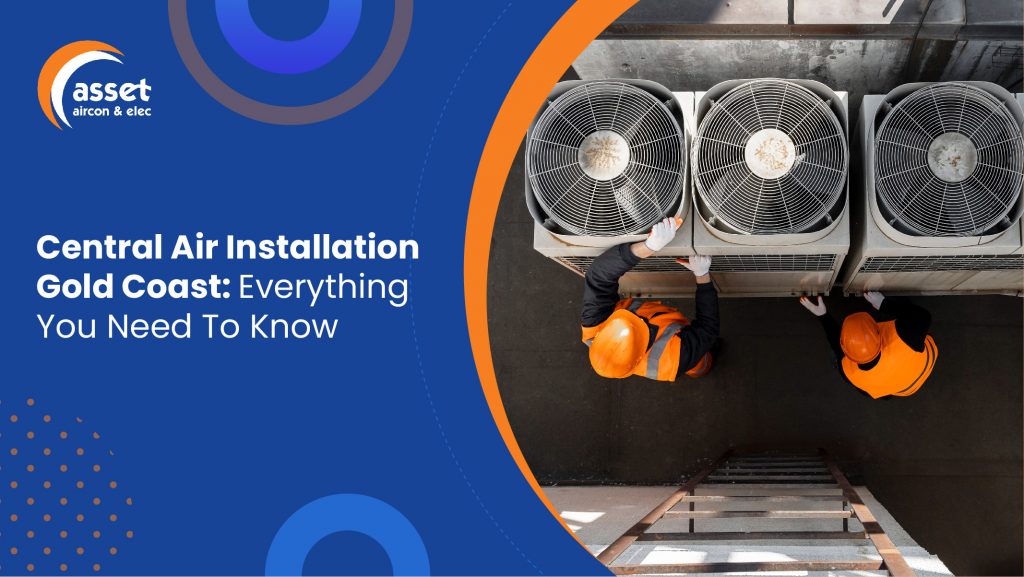Many ponder whether summers are becoming hotter or our heat tolerance diminishes as we age. Consequently, swapping out noisy and dripping window air conditioners for quiet, efficient whole-house central air installation of conditioning systems becomes increasingly tempting.
However, only some people take this idea further. Those already installed forced-air furnace ducts are concerned that modifying their heating system would be expensive, possibly leading to inefficiencies. On the other hand, those without existing ducts can’t fathom how they could be incorporated without causing significant damage to the house and incurring substantial expenses. Nevertheless, adding central air conditioning is more feasible and budget-friendly than you might assume.
How Much Does Central Air Installation Cost?
Incorporating central air conditioning into an existing forced-air heating system for a 186-square metre home typically ranges from $10 500 upwards depending on zoning of individual room requirements. The installation involves a team of technicians and can be completed within two to three days, often requiring minimal or no alterations to the existing ducting—however, the expenses and duration of work double for houses needing more pre-existing ductwork. Nevertheless, an experienced contractor specializing in retrofits can skillfully conceal ductwork behind walls, in the back of closets, and up in the attic, minimizing the need for extensive cuts into walls and ceilings, resulting in very little mess.
Criteria For Selecting The Best Central Air System
The primary and most crucial step in installing a central air conditioner in your home is choosing the appropriate equipment.
Before installing a central air conditioner in your home, cooling contractors need to conduct a Heat-Gain Calculation. This calculation helps determine the amount of heating your home is subjected to, aiding in selecting the appropriate unit size. If a contractor solely relies on their experience to determine the right unit, it might be best to seek out another professional.
The calculation considers various factors, such as the level of wall and ceiling insulation, the type and place of doors and windows, and the direction of your home toward the sun. These factors and your location influence the unit size required for efficient cooling. Additionally, the calculation highlights the benefits of upgrading your house’s insulation, increasing its energy efficiency, and reducing the size of the necessary air conditioner.
How To Know The Ideal Central Air Conditioning For You
To accurately determine the appropriate size of a central air unit for your home, follow these steps:
1. Size Of The Unit: Using the heat-gain calculation, your contractor will determine the right size for your air conditioner, measured in killowats. Why is it crucial to have the correct size unit? If the unit is too small, it won’t be able to cool the rooms adequately on extremely hot days, and it will cost more to run because it will have to work for longer periods to try to cool the space. On the other hand, if the unit is smaller, it will also be more expensive since larger units require more electricity.
Moreover, an oversized unit won’t effectively reduce humidity. This is because it cools the air so rapidly that it switches off before circulating enough air past the coils to remove the necessary moisture. As a result, the room won’t feel as cool as the temperature indicates, and it might even feel sticky and damp.
2. AC Efficiency: Once your contractor determines the appropriate size of the air conditioner, they will discuss its efficiency with you, which is measured using the seasonal energy efficiency rating (SEER). The SEER indicates how much hot air conditioner can remove for each watt of electricity. A higher SEER means lower operating costs.
3. Unit Type: Now, you need to choose the type of system you want to purchase, and two options are available. The first is called a “package system,” where the condenser and the fan-and-coil system are combined into a single unit. The condenser cools the refrigerant and releases warm air, while the fan-and-coil system cools the air and blows it into your home through ducts. It’s like having a large wall air conditioner with connected ducts, but package systems are not very common.
The second option is a “split system,” with the condenser outside the house and the fan-and-coil system or indoor unit inside. They are joined by tubes that has refrigerant. Sometimes, it can be directly fitted directly back-to-back, this means that the condenser unit is directly outside where the indoor unit is mounted. Other installation types are Up-and-over. Here the indoor unit is installed on an internal wall with refrigeration piping running through the ceiling space over rooms in the house to reach the outdoor unit where it is either installed on a wall bracket or on the ground. Capping are used to cover the refrigerant piping carrying the refrigerant on the outer walls, they are designed to look like downspouts to blend in with the surroundings.
4. Placement: Even the quietest condensers can produce some noise, so it’s important to collaborate with your contractor to choose a suitable location that won’t disturb bedrooms or home offices. Avoid placing the condenser near windows where you spend time, and be cautious about putting it under a deck or enclosing it completely because it expels warm air. Any restriction to the airflow can reduce the efficiency of the unit. However, you can cleverly hide the condenser in your landscaping if there is enough space for proper air circulation.
Final Thoughts
Choosing the appropriate central air conditioning system is vital for optimal cooling efficiency and comfort. Highlighting the importance of accurate heat-gain calculations to recommend the right size unit, preventing undersized and oversized systems. With the right size unit, one can enjoy efficient cooling, lower expenses, and a comfortable indoor environment.
As you select an air conditioning system, consider Air Conditioning Gold Coast | Asset Aircon & Elec as your reliable partner. Specializing in well-engineered energy-efficient air conditioning and mechanical equipment, their expert sales and design team are dedicated to providing tailored solutions to meet your needs.
Furthermore, Air Conditioning Gold Coast | Asset Aircon & Elec stands out as an industry leader in commercial air conditioning repair and maintenance services. Whether it’s factories, office blocks, or shop fit-outs, they offer a comprehensive range of solutions, making them your ultimate one-stop shop for all commercial air conditioning requirements.
Experience the difference with Air Conditioning Gold Coast | Asset Aircon & Elec and ensure your air conditioning system’s utmost comfort, efficiency, and longevity.









